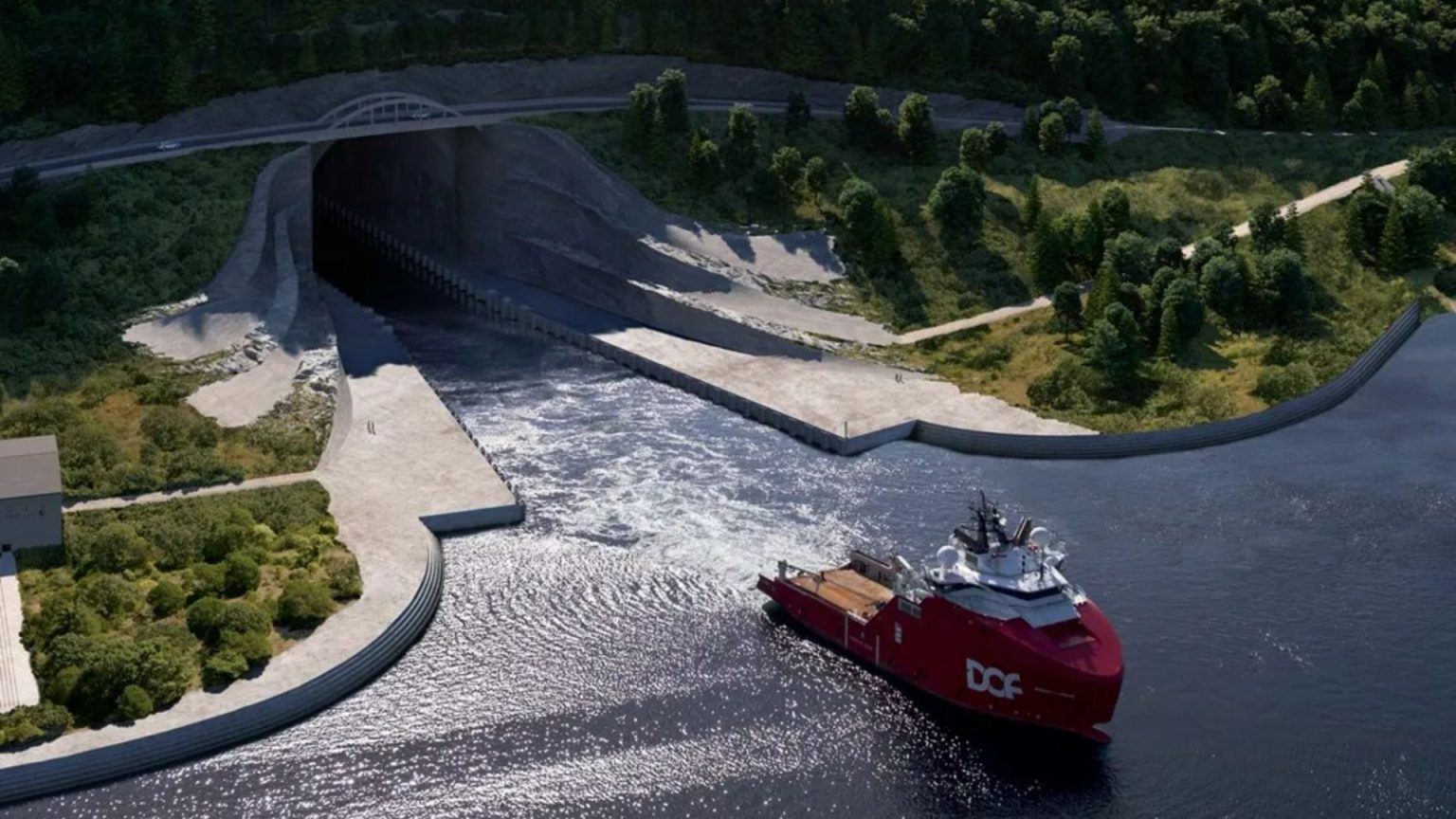The Stad Ship Tunnel, a groundbreaking project poised to become the world’s first full-scale ship tunnel, is set to commence construction in Norway following a pandemic-related delay. This ambitious endeavor aims to circumvent the perilous waters of the Stad Peninsula, a region notorious for its treacherous tides and unpredictable weather conditions that have historically hampered maritime trade and tragically claimed the lives of many sailors. For decades, smaller vessels were often portaged overland using timber logs to avoid these dangerous waters, but the increasing size and weight of modern commercial ships have rendered this practice unfeasible. The tunnel offers a safer and more efficient alternative, promising to significantly enhance maritime activity in the area.
This mile-long passage will be carved directly through the Stad Peninsula’s mountainous terrain, providing a sheltered route for both cargo and passenger ships. The tunnel’s entrances will be situated at Selje in the north and Moldefjord in the south, where the peninsula is narrowest. A sophisticated traffic management system, akin to that used in air traffic control, will regulate vessel access through allocated time slots, ensuring smooth and safe passage. Speed limits within the tunnel will be enforced, with a maximum of five knots for most vessels and eight knots for speedboats, allowing for an estimated throughput of five ships per hour. The construction process will involve the excavation and removal of approximately three million cubic meters of rock, a testament to the engineering complexity of the project.
Beyond its functional purpose, the Stad Ship Tunnel is anticipated to become a major tourist attraction, drawing visitors eager to witness this unique infrastructural marvel. Its location along the Norwegian coastal route makes it easily accessible to tourists, further bolstering its potential as a popular destination. The tunnel’s completion is expected to significantly enhance the region’s maritime industry and offer a safer passage for vessels navigating the treacherous waters. It represents a significant investment in Norway’s infrastructure and is projected to contribute to the country’s economic growth and tourism sector.
The Stad Ship Tunnel’s construction is scheduled to begin in 2025, with an estimated completion timeframe of four to six years, placing its operational launch around 2030. This ambitious undertaking reflects Norway’s commitment to innovation and its proactive approach to addressing maritime safety challenges. The tunnel’s successful completion will mark a significant milestone in engineering and offer a model for similar projects in other regions facing similar navigational challenges. It will stand as a testament to human ingenuity and the capacity to overcome natural obstacles through technological advancements.
Meanwhile, another ambitious tunneling project is underway in China: the Tianshan Shengli motorway tunnel. This colossal undertaking aims to burrow a 13-mile passage through the Tianshan Mountains, one of the world’s longest mountain ranges. Upon its completion in 2031, this £3 billion project is expected to drastically reduce travel times through the mountainous terrain, shortening the journey from Urumqi to Korla from several hours to a mere 20 minutes. This ambitious project underscores China’s commitment to infrastructure development and its drive to improve transportation efficiency across vast geographical distances.
Both the Stad Ship Tunnel and the Tianshan Shengli motorway tunnel represent remarkable feats of engineering, highlighting the global push towards innovative infrastructure solutions to overcome geographical challenges. These projects demonstrate the capacity of human ingenuity to reshape the landscape and improve connectivity, contributing to both economic development and enhanced safety for travelers and maritime trade. The Stad Ship Tunnel stands out as a unique project, creating a safe passage through a notoriously dangerous maritime zone, while the Tianshan Shengli tunnel represents a significant advancement in land-based transportation infrastructure, showcasing the ongoing pursuit of efficiency and accessibility in a rapidly developing world.











